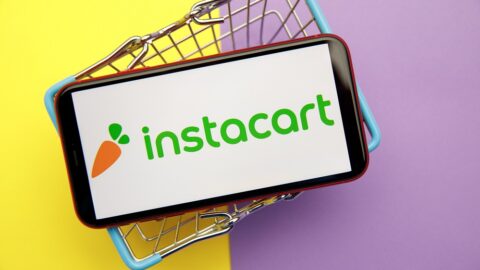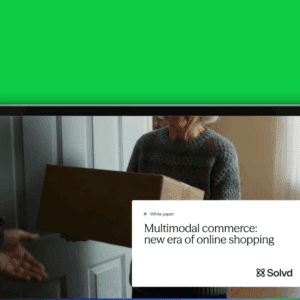Today’s marketing and ecommerce leaders know that video is a critical component of any content strategy. After all, retailers using video in product detail pages (PDPs) can see conversions increase by up to 80%, and mobile shoppers specifically will spend 88% more time on websites when they’re engaging with video.
However, interactive video can drive even more value for brands and retailers, allowing them to incorporate clickable elements into their content, such as links to quizzes, add-to-cart functionality and other calls to action.
“We’re all watching more video these days on our phone,” noted Dane Hagemann, Senior Sales Engineer for Vimeo during a recent Retail Strategy & Planning Series session. “And interactive video specifically, when used as an ad, can drive 9X higher impact on purchase intent. We’re no longer seeing people press play, watch content and move on. They’re engaging.”
3 High-Impact Interactive Video Ideas
During the session, titled “Unlocking the Power of Interactive Video for Retail,” Hagemann and David Gillespie, Product Marketing Lead at Vimeo, outlined how brands and retailers can harness the power of interactive video to boost customer engagement and sales, especially in the highly competitive holiday selling period.
1. Add product ‘hot spots’.
The most obvious and valuable benefit of interactive video is that it can support more dynamic storytelling and, ultimately, drive more sales. A turnkey way to connect this engaging video content to products is to add product “hot spots” that allow consumers to click and learn more about individual products being used in context.
For example, in a video featuring celebrity chef and cookbook author Jamie Oliver, there are various hot spots that consumers can hover over or click on. One hot spot shares details about his previous books, and viewers can click to pre-order his newest one on Amazon. Another, featuring a mortar and pestle, allows viewers to learn more about the tool and what it’s useful for, and see where they can buy the item online.
“We can easily add these interactive elements throughout a video, and then sprinkle those videos throughout your website, on product pages and in your blogs,” Gillespie explained. “With these hot spots, you can turn a passive viewing experience into a more novel, lean-forward experience — where viewers see something new and interesting, and they are incentivized to engage with this novel experience, click to find out more or take some sort of action.”
2. Incorporate quizzes, surveys and branching.
Merchants also can use interactive video to connect consumers to more personalized information and recommendations. For example, branching allows viewers to choose their own journey by jumping around the video to find information that’s most relevant to their needs.
“This is really helpful in a retail use case because you can be up front with your product offerings and allow the viewer to narrow down what they’re interested in, on their terms,” said Hagemann. “It’s a great way to remind them that you have a whole bunch of different things they can look at, but you don’t want to waste their time.”
For example, a fashion brand can use branching in a video to showcase its entire new winter collection, but also allow a shopper to jump to the section on boots if they don’t need a new coat. “It’s a great way to seem like you’re giving the viewer control and show that you want to help them get what they’re looking for,” he explained.
Once shoppers find the section of a video they’re interested in, they can then click to learn more about a specific product or engage with other information, such as supporting services, contact information and more. Vimeo also has an AI tool that allows consumers to ask a question and receive answers based on content from the video itself, another way for consumers to choose their own journey.
Williams Sonoma has integrated video throughout its entire site, as well as in banners, its mobile app and even individual product pages. Using Vimeo, the retailer has been able to streamline workflows so it’s easier for employees to create, manage and publish these videos successfully. “They’ve seen a ton of success with pages that have video on them versus the ones that don’t,” Hagemann said. “They’ve got a lot of great products, and they look really nice in the context of home or in a kitchen. Showing those products off in videos has really made them stand out in a way that they didn’t used to.”
3. Enable deeper brand storytelling.
Brand stories are multifaceted, covering many years and milestones. While “About” pages encourage consumers to scroll endlessly, interactive videos can create “digital breadcrumbs” that allow visitors to learn more about a specific point of the brand’s story.
“The same way your site might scroll deeply with lots of different images and copy [but] where you can click off and do other things, your video story can have side quests too,” Gillespie explained. “Your video can have these hot spots that show up and invite the user to click to learn more, or to take specific actions if they feel like digging deeper and doing more.”
He added: “Through that video, [consumers] are getting your tone, they’re getting your expression and you’re driving the kind of emotional beats that keep people engaged and interested, and really connect with you on more than a transactional level — which is the really the point of storytelling — resulting in more conversions and higher interest from your site visitors.”
Videos also help create a consistent brand story and experience across different areas of the site. For example, Gap has been able to maintain consistency across channels, conveying how fashion supports self-expression and individuality. The retailer was able to centralize all branded content, including shoppable videos and storytelling videos, and add interactive elements. The retailer has seen more than 65 million views of this video content with the interactive elements that help boost customer engagement.
Click here to watch the full session and see these examples in context.













